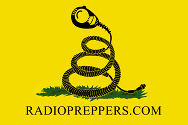I'll bet the rats at the stream found the results of your experiment simply shocking!
- Welcome to Radio Preppers.
News:
Buy me a coffee: https://ko-fi.com/gilgsn
Paypal:
https://www.paypal.com/biz/fund?id=WEYR7GMA494QL
YouTube:
https://www.youtube.com/c/radioprepper
Twitch: https://www.twitch.tv/radioprepper
Shirt & Mug:
https://teespring.com/stores/radio-preppers
Patreon:
https://www.patreon.com/radioprepper
Odysee:
https://odysee.com/@RadioPrepper:d
Facebook:
https://www.facebook.com/groups/radiopreppers/
Thingiverse:
https://www.thingiverse.com/Radio_Prepper
Send Bitcoins to: bc1qc5jq4dxt7359sh80lkv9v8rlsgnh322hmn6xyc
This section allows you to view all posts made by this member. Note that you can only see posts made in areas you currently have access to.
Pages1
#2
Antennas / Re: Antenna wire
January 04, 2020, 05:18:31 AM
Winding on a stick or folding wire back on itself will get you ballpark measurements, but may require a lot of extra trial and error testing after cutting the wire. These methods can induce capacitance or inductive loading effects which may skew measurements.
One alternate method I used, and it worked really well, is to take a reading of the lowest SWR point at your initial wire length and note that frequency. You can use the standard 468/frequency to determine an initial length.
Multiply the initial length times the lowest measured SWR frequency (i.e., take test measurements) to find an adjustment factor, then calculate adjusted length using this factor for best resonance (SWR) at your desired frequency. You can use this method whether you have an antenna analyzer or multiple trial measurements, as long as you can measure lowest SWR point (but the analyzer makes this really easy!)
Restated:
original length x original frequency low SWR point = adjustment factor; then divide the desired frequency into this factor to get the corrected length.
For a hypothetical example:
Given - Initial trial length of 34 ft per dipole antenna leg, and desired 40m frequency is 7.100 mhz.
If measured low SWR for initial length of 34 ft antenna leg is at a frequency of 7.00 mhz, to find the length needed 7.100 mhz, set up the equation:
34 ft x 7.0 mhz = 238 (new adjustment factor) : new adjustment factor 238 / 7.100 mhz = 33.5 ft new length (or 33 ft, 6 in - remember to convert the decimal to inches!).
This should get you very close to the correct length, and, it also takes into account your particular circumstances which cause a deviation from using the standard formula 468/freq mhz (or 234/freq for each dipole leg), such as surroundings, height, and other factor affecting antenna resonance.
Metric system users will need to make appropriate adjustments in lengths and calculation formulas.
Although this example used a dipole for illustration, there is no reason not to use it for other type antenna adjustments. For example, I used it to adjust a single leg sloper coming off a rooftop tower counterpoise successfully. It really just boils down to using a math tool to calculate a proportionate change.
One alternate method I used, and it worked really well, is to take a reading of the lowest SWR point at your initial wire length and note that frequency. You can use the standard 468/frequency to determine an initial length.
Multiply the initial length times the lowest measured SWR frequency (i.e., take test measurements) to find an adjustment factor, then calculate adjusted length using this factor for best resonance (SWR) at your desired frequency. You can use this method whether you have an antenna analyzer or multiple trial measurements, as long as you can measure lowest SWR point (but the analyzer makes this really easy!)
Restated:
original length x original frequency low SWR point = adjustment factor; then divide the desired frequency into this factor to get the corrected length.
For a hypothetical example:
Given - Initial trial length of 34 ft per dipole antenna leg, and desired 40m frequency is 7.100 mhz.
If measured low SWR for initial length of 34 ft antenna leg is at a frequency of 7.00 mhz, to find the length needed 7.100 mhz, set up the equation:
34 ft x 7.0 mhz = 238 (new adjustment factor) : new adjustment factor 238 / 7.100 mhz = 33.5 ft new length (or 33 ft, 6 in - remember to convert the decimal to inches!).
This should get you very close to the correct length, and, it also takes into account your particular circumstances which cause a deviation from using the standard formula 468/freq mhz (or 234/freq for each dipole leg), such as surroundings, height, and other factor affecting antenna resonance.
Metric system users will need to make appropriate adjustments in lengths and calculation formulas.
Although this example used a dipole for illustration, there is no reason not to use it for other type antenna adjustments. For example, I used it to adjust a single leg sloper coming off a rooftop tower counterpoise successfully. It really just boils down to using a math tool to calculate a proportionate change.
Pages1
